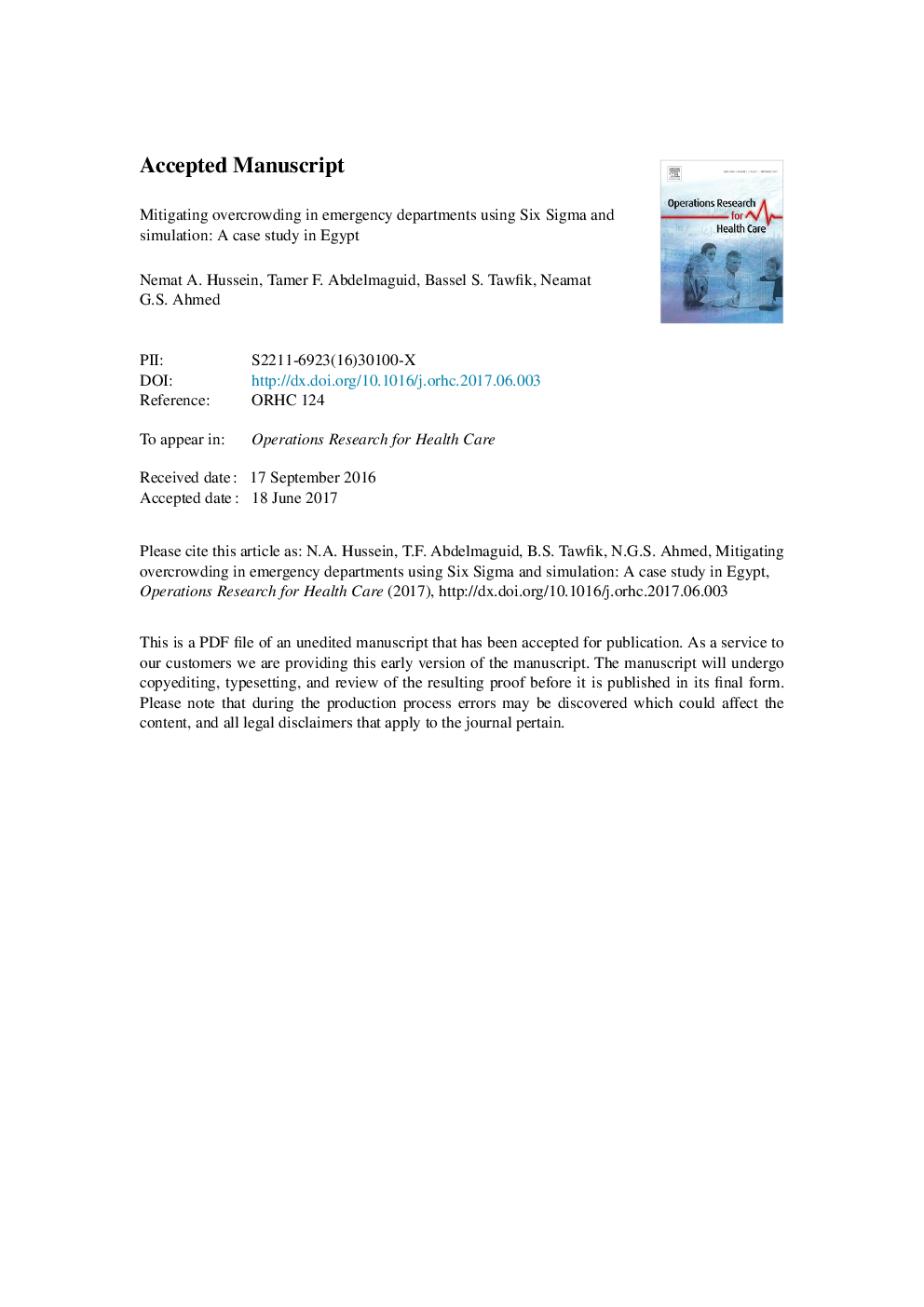| Article ID | Journal | Published Year | Pages | File Type |
|---|---|---|---|---|
| 7543568 | Operations Research for Health Care | 2017 | 28 Pages |
Abstract
Overcrowding in emergency departments (EDs) is a serious problem that can harm patients and lead to negative operational and financial performances for hospitals. This paper integrates the Six Sigma methodology with discrete event simulation (DES) to guide improvement decisions, in which we target the reduction of overcrowding in EDs with a special attention on the medical equipment utilization and the influence of changing the medical equipment technology on patients' waiting time and consequently their satisfaction. The Six Sigma methodology, based on the “Define, Measure, Analyze, Improve, and Control (DMAIC)” format, is used to analyze the EDs overcrowding problem, diagnose its causes, and control the performance improvement plans. The DES is used within the “Improve” phase in order to provide a prognosis for the expected performance under the proposed improvement scenarios and to evaluate their effects on the ED performance measures. This research investigates the benefits of the application of the quality improvement methods in the Egyptian healthcare system which has different characteristics compared to developed countries. A case study in a private tertiary hospital is used in the current investigation. We propose process-based modifications that can help reduce the overcrowding problem, increase patient throughput, and reduce patient length of stay. The case study demonstrates the effectiveness of using the integrated Six Sigma-DES approach on reducing the ED crowdedness. The use of DES in the “Improve” phase provides inexpensive assessments of the improvement alternatives and eliminates the troubles associated with real system modifications.
Related Topics
Health Sciences
Medicine and Dentistry
Public Health and Health Policy
Authors
Nemat A. Hussein, Tamer F. Abdelmaguid, Bassel S. Tawfik, Neamat G.S. Ahmed,
